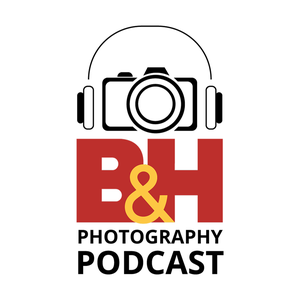
B&H Photography Podcast
B&H Photo & Video
- 1 hour 14 minutesPassing the Podcast Keys with Derek Fahsbender and Allan Weitz
Allan Weitz had little idea of the grand photographic adventures in store when he signed on as host of the B&H Photography Podcast shortly before the show’s debut in October 2015. As a self-described big mouth, and with more than 40 years as a working pro fueling his curiosity about all things photographic, Allan quickly honed his chops to become the voice of the show. Today’s episode marks a crossroads, as Allan passes his hosting mic to the show’s incoming host, Derek Fahsbender, producer and host of the B&H Event Space. During a lively chat, we celebrate Allan’s long and successful career, both on assignment and at the helm of the podcast, with some never before told stories and audio clips from memorable interactions with guests. A few of the many topics we cover include, how a kid from Sheepshead Bay made a name for himself photographing classic yachts, the ways in which Allan’s time behind a New Jersey deli counter enhanced his ability to engage with people on a human level—among other benefits to career reinvention—and how his shift into podcasting taught him to use his voice as an instrument. As Allan aptly summarized for attendees of the podcast team’s 2018 presentation of Podcasting 101: “It’s not always what you say, but how you say it.” Guest: Allan Weitz Episode Timeline 3:38: Allan’s B&H Event Space segment from Podcasting 101. 8:35: The back story to Allan’s one-word podcast intro “Greetings!” 10:44: Allan’s chat with digital camera inventor Steve Sasson about their shared Brooklyn roots. 13:56: Allan’s hosting skills as a court jester—or Tummler in Yiddish. 16:12: Gear talk, and a clip from Allan’s chat with Bellamy Hunt of The Japan Camera Hunter. 21:19: Allan waxes poetic about his love for the Hasselblad Superwide, plus his early adoption of digital gear. 28:24: Branching out from commercial assignments to tech writing and other things.
38:18: Episode break
39:27: Memorable stories and life lessons from Allan’s assignment career. 44:22: Allan’s entrée to the world of yachting photography and portfolio tips. 50:44: Allan’s career evolution in the rarified 1980s photography landscape. 57:31: The art of the interview and the value of collaboration among the podcast team. 59:53: Getting beyond difficult pictures during an interview with Bruce Gilden 1:03:50: Upcoming plans and Allan’s Kodachrome book project. 1:10:31: Allan offers listeners his Tusen Takks for their trust in his time behind the mic.
Guest Bio:
Allan Weitz started taking pictures when digital meant doing something with your fingers. A graduate of New York City’s High School of Art and Design and the School of Visual Arts, Allan is the founding host of the B&H Photography Podcast, one of the highest-rated photography podcasts in Apple's Creative Arts category.
For more than 50 years, Allan’s photographs have graced the covers and inside pages of dozens of publications, including New York magazine, Esquire, GQ, Yachting, and Nautical Quarterly. Many of these images have won him awards from the New York, Philadelphia, and New Jersey Art Directors Clubs, the Graphic Artists Guild, Art Direction Magazine, Print, and Graphis, among others.
More recently, Allan has had great success exhibiting—and winning awards for—his photos as fine art prints, as well as dabbling with artificial intelligence using the traditional photos from his vast image library as source material.
Stay Connected: Allan Weitz Website: https://www.allanweitz.com/ Allan Weitz Instagram: https://www.instagram.com/allanweitz/ Allan Weitz articles on the B&H Explora Blog: https://www.bhphotovideo.com/explora/users/allan-weitz Podcasting 101 with the B&H Photography Podcast Team: https://www.youtube.com/watch?v=Yd2KDaNSjGI Steve Sasson Podcast Episode: https://www.bhphotovideo.com/explora/podcasts/photography/invention-of-digital-camera Japan Camera Hunter Podcast Episode: https://www.bhphotovideo.com/explora/podcasts/photography/podcast-the-japan-camera-hunter Graham Nash Podcast Episode: https://www.bhphotovideo.com/explora/podcasts/photography/graham-nash-ace-photographer-digital-printing-pioneer-music-legend-the-bh Bruce Gilden Podcast Episode: https://www.bhphotovideo.com/explora/podcasts/photography/closer-look-bruce-gilden
End Credits: Founding Host: Allan Weitz
Incoming Host: Derek Fahsbender
Senior Creative Producer: Jill Waterman
Senior Technical Producer: Mike Weinstein
Executive Producer: Richard Stevens
16 January 2025, 11:00 am - 1 hour 27 minutesBlack Cowboys & Rodeo Culture, with Ron Tarver & Ivan McClellan
Top shot © Ron Tarver
Cowboy lore has deep roots in American culture. Yet, black cowboys have lived pretty much under the radar until recently, when songs by pop culture icons Lil Nas X and Beyoncé went viral and catapulted the black western aesthetic into the limelight.
In today’s show, we’re getting the inside scoop from two photographers who’ve been fully immersed in these vibrant communities since long before they became a top fashion trend. Separated by a generation in age and with pictures spanning from film to digital, we follow Ron Tarver and Ivan McClellan from their early years in Oklahoma and Kansas, to the urban stables of Northern Philadelphia, the legendary Roy LeBlanc Rodeo in Okmulgee, Oklahoma, and beyond.
Listen in and discover how the popularity of a single newspaper assignment led Ron to the pages of National Geographic and a career defining body of work.
In a similar manner, Ivan’s hunch to act on a chance invitation morphed into a passion project that reconnected him to his midwestern roots and ultimately expanded his role from photographer to that of an entrepreneur and rodeo boss.
Ever wonder about the funding and stamina required to compete as a rodeo athlete? We take that bull by the horns at the end of the show.
Guests: Ron Tarver & Ivan McClellan Episode Timeline:
4:09: Ron Tarver and Ivan McClellan’s early memories of cowboy culture during their respective youths in Kansas City and Fort Gibson, Oklahoma.
9:19: Ron’s early story for the Philadelphia Inquirer and his subsequent documentation of black cowboy culture.
15:06: The camera gear and film stock Ron used for his pictures, plus digitizing analog slides using a digital camera, macro lens and bellows system.
20:15: Technical limitations Ron faced when shooting film, and his editing process when working with National Geographic.
23:19: Ivan’s start as a designer, his introduction to photography and the world of black cowboys, and his shooting process at the rodeo.
33:40: The dominance of women within black rodeos, a female horse whisperer, and tips for photographing horses in a rodeo context.
44:34: Episode Break
45:35: The journey behind our guest’s respective books, and Ron’s collaboration with a noted editor to create The Long Ride Home.
51:19: The back story to Ivan’s book—from a self-published Kickstarter release to the editor he worked with to get Eight Seconds published by Damiani.
57:10: Ivan and Ron discuss each other’s finished book projects, questions about model releases, plus the current hunger for black cowboy culture.
1:05:23: Ivan’s work to promote black rodeo athletes and the economics of competing in this arena.
1:10:39: How Ivan’s life has changed since founding the Eight Seconds rodeo in Portland, Oregon.
1:16:04: The impact of Ivan’s work on the lives of rodeo athletes, and the maximum number of bulls a rodeo athlete can ride in a single day.
Guest Bios:
Ron Tarver was born and raised in Fort Gibson, Oklahoma, and is now based outside Philadelphia, Pennsylvania. During 32 years as a staffer at The Philadelphia Inquirer, he was nominated for three Pulitzer’s and shared the 2012 Pulitzer Prize for public service, in addition to many other accolades.
Tarver’s photographs have been exhibited internationally. His pictures can be found in private, corporate, and museum collections, and have appeared in major publications both in print and online.
In 2004, he co-authored the book We Were There: Voices of African American Veterans, published by Harper Collins, accompanied by a traveling exhibition.
A recipient of a 2021 Guggenheim Fellowship and a 2001 Pew Fellowship in the Arts, Tarver has also received funding from the NEA, the Pennsylvania Council on the Arts, and an Independence Foundation Fellowship.
He currently serves as Associate Professor of Art at Swarthmore College. His book, The Long Ride Home: Black Cowboys in America was released by George F Thompson Publishers in September.
Ivan McClellan is a photojournalist and designer originally from Kansas City, Missouri. These days he calls Portland, Oregon home.
His work reveals marginalized aspects of black culture, challenging broad assumptions and myths about racial identity in America.
His project Eight Seconds, focuses on elevating narratives about American Black cowboys, and transforming the culture of the American West by ‘re-centering’ black women and men back as an integral part of our historical narrative.
After initially self-publishing his photos in book form, Eight Seconds: Black Rodeo Culture was released by Damiani books in April 2024.
The winner of the 2022 Getty Inclusion grant, McClellan’s photos have been presented in and collected by Museums and cultural spaces across the United States. His work has also been featured in ESPN: The Undefeated and Fast Company.
As an experience designer for Adobe Lightroom, he has led projects for Nike, Adidas, Disney, and the U.S. National Soccer Team. And most recently, he founded the Eight Seconds Rodeo in 2023.
Stay Connected: Ron Tarver Website: https://www.rontarverphotographs.net/ Ron Tarver Instagram: https://www.instagram.com/rontarver/ Ron Tarver Wikipedia: https://en.wikipedia.org/wiki/Ron_Tarver Ron Tarver The Long Ride Home book: http://www.gftbooks.com/books_Tarver.html
Ivan McClellan Website: https://eightsecs.com/ Ivan McClellan Instagram: https://www.instagram.com/eightsecs/ Ivan McClellan / 8 Seconds Linktr.ee: https://linktr.ee/eightsecs Ivan McClellan at Damiani Books: https://www.damianibooks.com/en/collections/mcclellan-ivan
End Credits:
Host: Allan Weitz
Senior Creative Producer: Jill Waterman
Senior Technical Producer: Mike Weinstein
Executive Producer: Richard Stevens
2 January 2025, 11:00 am - 1 hour 41 minutes2024 Photo Gear of the Year with Kevin Rickert
Well, 2024 has certainly come and gone in a flash, meaning it’s time once again for us to reflect on new photo offerings in our annual Cameras of the Year episode, now renamed Photo Gear of the Year. Featured in our discussion are new releases from Canon, FUJIFILM, Leica, Mint, Nikon, OM SYSTEM, Panasonic, Ricoh Pentax, and Sony.
In the words of our recurring guest, Kevin Rickert, B&H’s Senior Sales Trainer for Photography and Lighting, “Everything old is new again” at least when it comes to this year’s most sought-after camera releases. A penchant for pocketable, fixed lens cameras led us to organize our camera offerings by type rather than in an alphabetical laundry list. Along with debating the current craze for “the digicam look,” we consider whether manufacturers will respond to consumers’ increasing appetite for midrange point and shoots.
After the break, we shift to the newest crop of flagship cameras that are built for speed, while also discussing notable updates to other new releases. We also shed light on the essential role served by firmware updates, both in trimming a new camera’s time to market and allowing you to get more out of the camera you already have. As Kevin points out, “It's an important part of having a camera. Much like if you have a car, you need to get oil changes.”
We wrap things up with some predictions for 2025, including Kevin’s hopes for a continued resurgence of point and shoot models, plus some intriguing new photo accessories that caught his eye this year. Stay to the end to learn about the inventive new Fjordan camera control for the iPhone, recently acquired by Leica.
Guest: Kevin Rickert
Episode Timeline
2:30: Kevin Rickert’s role as a B&H sales trainer for photography and lighting.
9:34: What camera stood out the most this year: FUJIFILM X100VI
18:02: Ricoh GR III HDF / Ricoh GR IIIx
20:00: Nostalgia for midrange point and shoots and the digicam look
29:36: Leica D-Lux 8
31:42: Leica Q3 43
35:52: Fujifilm X-T50 (a baby Fujifilm X-T5) 37:30: Fujifilm X-M5
41:54: Pentax 17
48:52: Mint Camera Rollei 35AF
51:17: Episode break
52:22: Canon EOS R1 55:50: Sony a1 II
59:31: OM SYSTEM OM-1 Mark II 1:02:35: Nikon Z6 III 1:05:48: Canon EOS R5 Mark II
1:14:40: Leica SL III
1:17:55: FUJIFILM GFX 100 SII
1:20:31: Nikon Z 50 II
1:21:28: Sony ZV-E10 II
1:23:19: Panasonic Lumix S9
1:27:19: Kevin’s predictions for 2025
1:33:36: Peakto Image Management Software
1:35:06: Capture One 16.5 with Match Look
1:35:49: Fjordan iPhone camera grip
Guest Bio:
Kevin Rickert is B&H Photo’s Senior Sales Trainer for Photography and Lighting. It’s Kevin’s job to keep in touch with camera and lens manufacturers and get details about all the latest releases and updates. His role is to make sure the world-renowned B&H staff has all the information to answer your who, what, why, and other questions that you may ask, so they can satisfy all your wants and needs.
Born and raised in New York, Kevin is an intrepid street photographer, an avid traveler, and a baseball fan with 22 years in electronic retail, the last 10 of which have been spent as a sales trainer at B&H.
Stay Connected:
- B&H Photo Video Website: https://www.bhphotovideo.com
- B&H Photography Podcast landing page: https://www.bhphotovideo.com/explora/podcasts
- B&H Photography Podcast on B&H Photo’s YouTube channel: https://www.youtube.com/@BandH/podcasts
- B&H Photography Podcast Facebook Group: https://www.facebook.com/groups/1001107823418353
- B&H Photo Video Instagram: https://www.instagram.com/bhphoto
- B&H Photo Video Twitter: https://twitter.com/bhphoto
- Micro 4/3rds YouTube video link: https://www.youtube.com/watch?v=m072i-jDSg4
- Peakto Image Management Software: https://cyme.io/peakto-photo-organizer-software/
- Fjordan iPhone Camera Grip: https://shop.fjorden.co/en-us/pages/about
19 December 2024, 4:35 pm - 1 hour 16 minutesPicturing World Cultures: Marcela Taboada – Mexico
Photographers have a magical ability to transport us to hidden worlds, giving us intimate access to facets of society that would otherwise go unnoticed.
Above photograph © Marcela Taboada
In today’s podcast, we sit down with Mexican photographer Marcela Taboada, whose long-term documentary projects offer revealing glimpses into underrecognized communities, for Picturing World Cultures.
Combining a passion for making pictures that let her “see backstage,” with a knack for “knocking doors” and the tenacity to win over resistant subjects, Marcela gained rare access to photograph the daily lives of Mexico’s cloistered nuns. Follow her painstaking process and learn the secret to her acceptance as the nuns’ photography godmother during our chat.
We also discuss her series “Women of Clay,” documenting the enterprising women of a Mixtec village, who singlehandedly rebuilt their homes after an earthquake using Adobe bricks and a process taught by a Mexican architect.
Along the way, Marcela shares insights about the challenges of pursuing a photography career as a single mother with young children and reveals the lessons she learned from seeing aspects of her own story reflected in the lives of her subjects. If you haven’t already listened, check out all the episodes of our Picturing World Cultures podcast series here. Guest: Marcela Taboada Episode Timeline:
2:21: Marcela’s process in making pictures that let her “see backstage.”
5:15: A childhood memory and her fascination with viewing the stars from an observatory built by her great uncle.
10:16: Marcela’s introduction to cameras and the darkroom by photographing family trips.
13:24: University studies and a photo series inspired by her great aunt entering a Mexican nursing home.
18:13: Marcela’s photo gear and juggling her early photo career while raising two children as a single mother.
22:52: Marcela’s photo series Women of Clay, about a community of enterprising women who rebuilt their homes after an earthquake.
35:19: Episode Break
36:30: Marcela’s project Consecrated, and some background on Catholic monasteries in Mexico.
43:46: The seven orders of Mexican cloistered nuns, Marcela’s long process to gain access to photograph, and the miracle that finally convinced the nuns to let her in.
53:51: Marcela’s role as photography godmother for the Conceptionist order, and her approach to photographing the lives of the nuns.
1:00:38: The decision to photograph in color with a lightweight Sony RX camera for quiet operation and a contemporary look.
1:02:31: The nuns’ reaction to Marcela’s pictures and the ways in which they’ve adapted to 21st century life.
1:08:09: Marcela Taboada answers our PWC Visual Questionnaire.
Guest Bio: Marcela Taboada is a freelance photographer based in Oaxaca, Mexico since 1986. After initial studies in graphic design, she became drawn to photographing diverse communities for long-term stories that let her see backstage. Marcela has received both national and international accolades, including a Hasselblad Foundation scholarship, a National Geographic All Roads Photography Award, and Mexico's most prestigious art grant, the National System of Art Creators Award, which she received twice. Her photographs have been featured in solo and group exhibitions within Mexico and the United States, Europe, and Asia. Marcela has taught photography at universities, in high schools and in specialized workshops. Additionally, for 16 years she served as producer for American photographer Mary Ellen Mark’s Annual Oaxaca Photo Workshops.
Stay Connected: Marcela Taboada Website: https://www.marcelataboada.com/ Marcela Taboada’s National Geographic story: https://www.nationalgeographic.com/magazine/article/photo-story-consecrated-mexico-monasteries/
End Credits: Senior Creative Producer & Host: Jill Waterman
Senior Technical Producer: Mike Weinstein
Theme Music: Gabriel Richards
Executive Producer: Richard Stevens
5 December 2024, 11:00 am - 1 hour 15 minutesReclaiming a Natural Landscape, with Jade Doskow & Cal Flyn
What is the role of landscape photography in a post-industrial world?
In today’s podcast, we consider some possibilities in a chat with Jade Doskow, current photographer in residence for Staten Island’s Freshkills Park, and Cal Flyn author of the book Islands of Abandonment.
Above image: © Jade Doskow
While our two guests work in different disciplines, which leads to divergent approaches to the pictures they make, their shared purpose tells similar stories.
Among the topics we discuss are a distinction between romantic landscapes of the past and a more ambivalent attitude to the subject today, and a photographer’s responsibility to make pictures that go beyond merely decorative intent. You’ll also discover how dedication to a fine art passion project can lead to career advancement through paid assignments.
Join us for this fascinating discussion about recording the gradual process between post-industrial decay and engineered regeneration, or other states of rewilding
Guests: Jade Doskow & Cal Flyn
For more information on our guests and the gear they use, see: https://www.bhphotovideo.com/explora/podcasts/photography/reclaiming-a-natural-landscape-with-jade-doskow-cal-flyn
Stay Connected:
Jade Doskow Website: https://jadedoskowphotography.com/ Jade Doskow Instagram: https://www.instagram.com/j_doskow/ Jade Doskow Facebook: https://www.facebook.com/jade.doskow/ Jade Doskow at Freshkills Park: https://freshkillspark.org/os-art/jadedoskow Jade Doskow Lost Utopias Documentary: https://www.philipshane.com/lost-utopias Jade Doskow Urban Omnibus Project: https://urbanomnibus.net/2022/11/extra-terrestrial
Cal Flyn Website: https://www.calflyn.com/Cal Flyn Instagram: https://www.instagram.com/calflyn/ Cal Flyn Linktree: https://linktr.ee/calflynCal Flyn Islands of Abandonment: https://linktr.ee/IslandsofAbandonment
21 November 2024, 11:00 am - 59 minutes 28 secondsPicturing World Cultures: Mark Leong – China
In today’s podcast, we sit down with Mark Leong, a fifth-generation Chinese-American photographer, for Picturing World Cultures.
Above photograph © Mark Leong
From his arrival in 1980s Beijing on a one-year travel fellowship, to his decision to live and work there long-term over the following decades, we follow Mark’s path from his ancestral village to the Beijing art scene, and beyond.
He walks us through his experiences in documenting the massive cultural shifts as Chinese society transitioned from uniformity and limited choice to a realm of consumerism and increasing globalization.
We also discuss Mark’s long-term photographic project featuring China’s Post-90’s generation, the young adults born under the country’s one-child policy.
As Mark points out toward the end of our chat, “What’s interesting to me about this generation I’m photographing is that they have this kind of creativity, and they have the resources to use this creativity to make something.”
If you haven’t already listened, check out all the episodes of our Picturing World Cultures podcast series here.
Guest: Mark Leong
For more information about our guest and the gear he uses, see: https:/www.bhphotovideo.com/explora/podcasts/photography/picturing-world-cultures-mark-leong-china
Stay Connected:
Mark Leong Website: https://www.markleongphotography.com/
Mark Leong on Instagram: https://www.instagram.com/markleongphotography/
Mark Leong on Redux Website: https://reduxpictures.com/artist/mark-leong
Mark Leong’s book China Obscura: https://www.amazon.com/China-Obscura-Mark-Leong/dp/0811844617
Mark Leong’s Award from Center: https://centersantafe.org/comingofage
14 November 2024, 11:00 am - 1 hour 27 minutesPhotography Mentors & Lifelong Learning, with Reid Callanan and Craig Stevens
Today we chat with Reid Callanan, founder and director of the Santa Fe Photographic Workshops and renowned photo educator Craig Stevens, formerly of Maine Media Workshops and Savannah College of Art & Design, about photography mentors, lifelong learning, and the role photo workshops play in cultivating community. Craig and Reid share plenty of insight, not just on the requisite trust that’s required in a successful mentor and student relationship, but other topics such as what it means to be truly passionate about photography, collaboration, as well as how to critique the work of others without being “critical.” Whether you’re just getting started as a photographer or you’re a seasoned vet, you’re sure to walk away from today’s podcast with a nugget or two of wisdom. Photo caption: Double portrait of Reid Callanan and Craig Stevens Photo credit: Above Image © Joyce Tenneson
Episode Timeline:
4:44: Reid Callanan on first recognizing Craig Stevens as his mentor.
12:20: Craig’s early impressions of Reid.
16:25: How the concept of mentorship has changed over time and across generations.
19:56: Craig on the “workshop method” and past history as it applies to photography.
26:23: Online workshops versus intensive in-person learning opportunities.
31:38: Differences between an international photo workshop and a destination photo tour, and questions prospective students should ask.
36:38: Discussing the Santa Fe Photographic Workshop’s online mentorship program.
39:20: Making distinctions between mentorship and coaching relationships.
43:03: Episode Break
44:12: On the concept of lifelong learning.
50:52: Discussing the challenges in trying to learn photography as a vocation today.
55:38: The art of critique, what makes a photograph “good,” and dealing with personal tastes and biases when discussing photographs.
1:07:38: How motivation and inspiration factor into working with students.
1:11:01: Questions of cropping, aspect ratios, and Craig’s panoramic landscape photographs.
1:16:36: Photographic style and the idea of helping a student to differentiate themselves.
1:22:42: The evolution from traditional photographic printmaking to digital inkjet prints.
Guests: Reid Callanan & Craig Stevens Guest Bios: Reid Callanan is the founder and director of the Santa Fe Photographic Workshops. In addition to all the responsibilities involved in leading the workshops for the past 32 years, Reid is also an accomplished photographer in his own right who jumps on the opportunity to teach workshops whenever he can. Reid’s journey in photography started in 1974 during a semester abroad at Richmond College in London. He’s been making images ever since using a variety of photographic processes. After spending 14 years at the Maine Photographic Workshops, Reid headed west in 1990, where he founded the Santa Fe Photographic Workshops and the non-profit Santa Fe Center for Photography, now known as CENTER. In addition to serving as CENTER’s Vice-President of the Board of Directors, he serves on the President’s Council of the Texas Photographic Society; he’s a Board member for the American Society of Media Photographers Foundation; and The National Center for The Photograph.
Craig Stevens is a photographer, printmaker and photographic educator. He has taught, written about, and lectured extensively on art and education since 1975 when he received his MFA from Ohio University.
For 12 years he was associate director of the Maine Photographic Workshops, where he was also involved in the creation and development of the Workshops’ Resident Program. In 1994, he was workshops director for the 25th anniversary of Les Rencontres Internationale de la Photographie in Arles, France.
Additionally, Craig has served on the faculties of the Santa Fe Workshops, the Anderson Ranch Arts Center, and Les Ateliers de l’Image in France. In 2013, he was the first recipient of the Susan Carr Educator Prize awarded by the American Society of Media Photographers.
After 34 years at the Savannah College of Art and Design, where he held the rank of Professor Emeritus, Craig left full time teaching in 2023.
Stay Connected: Reid Callanan Website: https://www.reidcallanan.com/ Reid Callanan Instagram: https://www.instagram.com/reidcallanan/ Reid Callanan Facebook: https://www.facebook.com/reid.callanan Santa Fe Photographic Workshops Website: https://santafeworkshops.com/ Santa Fe Photographic Workshops YouTube: https://www.youtube.com/@SantaFeWorkshops Center Website: https://centersantafe.org/ Center Instagram: https://www.instagram.com/centersantafe/ Center Facebook: https://www.facebook.com/CENTERsantafe
Craig Stevens Website: https://www.craigstevens.me/ Craig Stevens Instagram: https://www.instagram.com/craigstevensstudio/ Maine Media Workshops Website: https://www.mainemedia.edu/ SCAD Website: https://www.scad.edu/
End Credits: Host: Allan Weitz
Senior Creative Producer: Jill Waterman
Senior Technical Producer: Mike Weinstein
Executive Producer: Richard Stevens
31 October 2024, 10:00 am - 1 hour 30 secondsPicturing World Cultures: Fabiola Ferrero – Venezuela
Today’s podcast has us sitting down with Venezuelan photographer and investigative journalist Fabiola Ferrero to discuss her long-term photographic projects in Venezuela, for Picturing World Cultures.
Above photograph © Fabiola Ferrero
Fabiola walks us through her childhood memories of Venezuela and describes how this period contrasts significantly with the country’s current climate. We also discuss how she got started in photography, and how her time spent both in and out of Venezuela helped grow her photography and more.
Guest: Fabiola Ferrero
Episode Timeline:
2:20: Fabiola discusses Venezuelan culture, and questions using the word resiliency in relation to the country’s ongoing crisis.
5:39: How she got started in photography.
8:20: Fabiola talks about overcoming shyness, learning how to photograph people as an introvert, and the advantages of slowly building a connection with subjects.
11:12: On being the last of her family to leave Caracas.
14:43: Fabiola’s early long term projects, Blurred in Despair and I Can’t Hear the Birds, and the importance of image selection to building different narratives.
19:57: The impact of leaving Venezuela and how this shifted her perspective as a photographer.
24:11: The importance of Fabiola’s assignment work in Venezuela and its impact on her personal work.
25:30: Episode Break
27:04: On migrating to Columbia in 2020, and her eventual return to Venezuela in 2022.
37:04: Fabiola runs us through her gear and setup.
38:09: Collaborating with other journalists in her latest project, The Wells Run Dry
44:10: The challenging topic of hope when discussing the future of Venezuela
46:50: We ask Fabiola about her mentorship program, Semillero Migrante
54:39: Fabiola Ferrero answers our PWC Visual Questionnaire.
Guest Bio: Fabiola Ferrero was born in Caracas, Venezuela in 1991. Her personal work reflects how her childhood memories contrast with her country’s current crisis.
Using her background in writing and investigative journalism, she develops long term visual projects focused on collaborative ways to speak about the human condition under hostile contexts.
To bring opportunities to other emerging photographers, Fabiola founded Semillero Migrante in 2021. This mentorship program on the topic of migration empowers Venezuelans and Colombians and promotes the integration of both cultures.
A 2018 Magnum Foundation Fellow in Social Justice, her additional recognition includes a 2021 Inge Morath Award, a 2022 Carmignac Photojournalism Award, and a World Press Photo award for Long Term Projects, which she received in 2023. Most recently, Fabiola completed a one-year fellowship at Columbia University’s Institute for Ideas and Imagination in Paris.
Stay Connected: Fabiola Ferrero Website: https://www.fabiolaferrero.com/ Fabiola Ferrero on Instagram: https://www.instagram.com/fabiolaferrero/ Fabiola Ferrero on Facebook: https://www.facebook.com/fabiola.ferrero/ Fabiola Ferrero on Twitter: https://x.com/FabiolaFerrero/ Fabiola Ferrero, I Can’t Hear the Birds Video: https://www.youtube.com/watch?v=m_AmKsv_OTM Fabiola Ferrero, Fondation Carmignac: https://www.fondationcarmignac.com/en/fabiola-ferrero-en/ Fabiola Ferrero, Institute of Ideas & Imagination: https://ideasimagination.columbia.edu/fellows/fabiola-ferrero/ Semillero Migrante Instagram: https://www.instagram.com/semilleromigrante/
End Credits: Senior Creative Producer & Host: Jill Waterman
Senior Technical Producer: Mike Weinstein
Executive Producer: Richard Stevens
Theme Music: Gabriel Richards
10 October 2024, 10:00 am - 1 hour 18 minutesB&H Podcast: Authentic Photographic Documentation vs AI Generated Images
In today’s podcast, we chat with Boris Eldagsen, visual artist and AI pioneer, and Miles Astray, documentary photographer, on a plethora of issues surrounding AI-generated content. Boris and Miles share a ton of insight into the nature of AI-generated images, from the implications of it becoming more prevalent, the possibility and dangers of the spread of misinformation all the way to the need to rethink how we engage with social media.
These are just a few of the points raised in our discussion with them. If you haven’t already listened, This episode is part of a wider series tracing the effects of AI on today’s creative community. Guests: Boris Eldagsen & Miles Astray Top shot: TOP_SHOT_Eldagsen_Astray_bhpodcast Photo caption: AI Generated Image “The Electrician” vs Authentic Photograph “Flamingone” Photo credit: Collaged diptych: © Boris Eldagsen / © Miles Astray
Episode Timeline:
3:40: Boris shares his thoughts on the difference in reception between his and Miles’ respective contest entries.
6:34: Discussing the blurry boundaries between editing photographs and generated images.
15:18: Miles shares some of his motivations behind his photo, “F L A M I N G O N E”.
20:12: As AI images become more prevalent what happens when we’re flooded with content with questionable basis in reality.
27:24: The pitfalls of generated images and living in a “post-truth” era.
29:37: Episode Break
30:52: The surprising, sometimes idiosyncratic nature of what AI models generate when entering prompts.
42:33: What the lack of guardrails and censorship with AI-generated content means for creativity.
47:55: Discussing the possible dangers of AI-content to the documentary-photography process.
53:07: The opposing nature of social media as a news source and a business.
59:34: The prevalence of fact checking on social media sites.
1:06:53: On the lack of a perfect solution to the problem with manipulated images and the spread of disinformation.
Guest Bios: Boris Eldagsen is an acclaimed media artist, photographer, and AI pioneer based in Berlin. His work in photomedia explores the limits of what can be depicted. Using a combination of street photography, staged works, and, most recently, both still and video AI image-making tools, he deals intensively with the subconscious, which inspires him to create new worlds of images.
Boris has taught creativity, concept development, and photographic art in both Germany and Australia since 2004. Additionally, he is a member of Deutsche Fotografische Akademie, and is responsible for their online activities.
Miles Astray is a multidisciplinary artist who combines writing and photography into art activism. He was inspired by a slow and immersive journey around the world that started in 2012, when he set out to work with grassroots nonprofits for a year.
Little did he know this would be the first step of a new chapter of a reinvented life, living and working with local communities in Latin America, Asia and Africa. When he returned home for the first time in 2018, he found home was no longer a place to settle, it was just another place to stop along the path of a greater journey. And, thus he’s still out there, not so much to find answers, but to keep asking questions.
Stay Connected: Boris Eldagsen Web site: https://www.eldagsen.com/ Boris Eldagsen Instagram: https://www.instagram.com/boriseldagsen Boris Eldagsen Facebook: https://www.facebook.com/boriseldagsen Boris Eldagsen YouTube: www.youtube.com/@boriseldagsen Boris Eldagsen Prompt Whispering Workshops: https://www.promptwhispering.ai/workshops/ Miles Astray Web site: https://www.milesastray.com/ Miles Astray Instagram: https://www.instagram.com/milesastray/ Miles Astray Facebook: https://www.facebook.com/MilesAstray/ Miles Astray Twitter: https://twitter.com/milesastray Boris Eldagsen Podcast Episode: https://www.bhphotovideo.com/explora/podcasts/photography/fake-memories-promptography-and-generative-ai-with-boris-eldagsen Stephen Shankland Podcast Episode: https://www.bhphotovideo.com/explora/podcasts/photography/photography-in-the-age-of-ai-with-stephen-shankland Fred Ritchin Podcast Episode: https://www.bhphotovideo.com/explora/podcasts/photography/photography-in-the-age-of-synthetic-imaging-with-fred-ritchin
26 September 2024, 2:00 pm - 58 minutes 53 secondsPicturing World Cultures: Naina Helén Jåma – Norwegian Sami
In today’s podcast, we’ll be talking with Norwegian photographer Naina Helén Jåma about her documentation of indigenous South Sami culture in Norway and her career as a press photographer in Scandinavia. Jåma details her childhood growing up in the small rural village of Snasa, where, at the age of 15, she began her career while working as a cultural interpreter and archivist at the Saemien Sijte Museum. From there, Naina takes us on a journey through her fascinating career as a photographer, from her training at the Nordic School of Photography to her work for world-renowned publications such as The New York Times, Bloomberg, and The Guardian Alongside her journalistic work, Naina maintains a close relationship with the traditional Sami arts of Duodji. Documenting the ongoing development of this art form pays tribute to oral knowledge and silent tradition, which is learned and transmitted visually.
Above photograph © Naina Helén Jåma
If you haven’t already listened, check out all the episodes of our Picturing World Cultures podcast series here.
For more information on our guests and the gear they use, see:
www.bhphotovideo.com/explora/podcasts
Guest: Naina Helén Jåma
Episode Timeline:
2:23: Naina’s early childhood and growing up in Snåsa, a small village in Norway with approximately 2,000 inhabitants.
6:14: Naina’s first job and the start of her career, working as a cultural archivist at the Saemien Sijite Museum.
10:44: How photographing handcrafted Sami items became Naina’s thesis while enrolled at the Nordic School of Photography
14:45: Discussing different aspects and signifiers of traditional Sami clothing.
19:40: The eight different seasons of Sami culture.
22:06: Discussing the role and influence of animism and other traditional Sami belief systems.
28:18: Episode Break
29:40: Naina’s go-to kit for cameras and lenses
33:10: Tips for shooting in cold climates and extreme conditions
35:14: Structuring documentation when working as a photojournalist
39:49: Naina’s diverse reportage, from documenting the NATO summit to Sami youth protests due to windmill farms violating traditional reindeer hunting lands.
46:30: What Naina learned from her time working on the other side of the lens as a Director of Photography
49:26: “Man Borrows the Land from Future Generations”
53:06: Naina Helén Jåma answers our PWC Visual Questionnaire.
Guest Bio: Naina Helén Jåma is a South Sami photographer and storyteller from Snaasa in Norway, currently based in Oslo. After starting her career at the Saemien Sijte Museum at age 15, where she worked to interpret and preserve South Sami culture.
Naina has maintained a close relationship with the traditional Sami arts of Duodji. Documenting the ongoing development of this art form pays tribute to oral knowledge and silent tradition, which is learned and transmitted visually. Trained at the Nordic School of Photography in Sweden, Naina has worked as both a photojournalist and a photo editor for various Scandinavian newspapers and agencies, as well as major international publications such as The New York Times, Bloomberg and The Guardian.
Naina is a member of the Sami Artists Association, and in 2020 she received a working grant from the Sami Council. Most recently, she was selected by the Norwegian Journal of Photography as one of nine photographers to work on a two-year heritage project, where she will be photographing and doing in-depth interviews to investigate the evolving legacy of Sami culture.
Stay Connected: Naina Helén Jåma Website: https://www.nainahelen.com/ Naina Helén Jåma on Instagram: https://www.instagram.com/nainahelen/ Naina Helén Jåma on Facebook: https://www.facebook.com/nainahelen.photography/ Naina Helén Jåma on Twitter: https://x.com/nainahelenwj/ Naina Helén Jåma in the Norwegian Journal of Photography: https://njp.no/2024/naina-helen-jama/ Naina Helén Jåma on Blink: https://blink.la/u/nainahelen
End Credits: Senior Creative Producer & Host: Jill Waterman
Senior Technical Producer: Mike Weinstein
Executive Producer: Richard Stevens
Theme Music: Gabriel Richards
12 September 2024, 10:00 am - 1 hour 3 minutesSay Less, with Dr. Greg Gulbransen
In today’s podcast, we’ll be talking with Long Island-based pediatrician and self-taught photographer Dr. Greg Gulbransen, whose newly released book Say Less documents the three years Gulbransen spent embedded with Malik, the paralyzed leader of a Crips’ set in the Bronx. Gulbransen details his journey from wildlife and fashion photography to documenting the lives of at-risk members of the Bikes Up Guns Down club to his most recent (and most daunting) project: photographing members of a violent street gang. Gulbransen also touches on his years-long campaign to require auto makers to install rear-view cameras in all American-made cars, a personal crusade born of the tragic car accident involving his infant son. Guest: Dr. Greg Gulbransen Top shot © Dr. Greg Gulbransen
Episode Timeline:
3:45: Dr. Greg’s early medical training in the Bronx, and his experiences photographing at-risk kids from the Bikes Up Guns Down bike club.
13:26: The start of Dr. Greg’s 3-year project photographing Malik, a gunshot victim and paralyzed leader of a Bronx Crips’ set.
14:55: The complex relationship between Dr. Greg, Malik and his mother, which allowed him to operate in such a potentially dangerous environment.
19:23: Christmas with Malik and his family.
30:57: Dr. Greg talks best practices for administering Narcan, using informants to keep himself safe, and helping Malik stay out of prison.
44:48: Episode Break
45:46: Working with former LIFE magazine editor in chief Bill Shapiro to edit and plan his photo book.
49:22: Obtaining two sets of releases from Malik and other set members for all photos and text to appear in the book.
51:40: Dr. Greg discusses his copious notes while embedded, and details about capturing candid photos of set members and other neighborhood subjects.
54:50: Dr. Greg’s traumatic yet successful campaign requiring the auto industry to install of rear-view cameras in all American cars.
Guest Bio: Dr. Greg Gulbransen is a Long Island-based pediatric doctor, who has been making photographs since 2014. Following a tragic car accident involving his son in 2002, Gulbransen successfully campaigned to get the auto industry to install rear-view cameras in American cars. As a result, all new cars in the US must have rear-view cameras, leading to an immeasurable impact on the lives of Americans.
After starting out with wildlife pictures and editorial fashion work, Gulbransen transitioned to documenting the lives of unique individuals with interesting stories in an aim to preserve their legacies through photography. This work is often informed by a drive to highlight issues impacting American society, with a focus on young people.
Over the course of three years, Gulbransen photographed Malik, a set leader of the violent street gang, the Crips. In 2018, Malik was shot and paralyzed by a bullet from a rival gang. As a result, his world now centers around the small Bronx apartment where he’s cared for by family and fellow gang members. This project was recently released by Gost Books as the monograph Say Less, Gulbransen’s first book.
Stay Connected: Dr. Greg Gulbransen’s Website: https://www.gulbransenphoto.com/ Dr. Greg Gulbransen’s Instagram: https://www.instagram.com/greggulbransenpeds Word on the Street YouTube Channel: https://www.youtube.com/@superwariobro Dr. Greg Gulbransen’s book Say Less: https://gostbooks.com/en-us/products/say-less
29 August 2024, 2:02 pm - More Episodes? Get the App
Your feedback is valuable to us. Should you encounter any bugs, glitches, lack of functionality or other problems, please email us on [email protected] or join Moon.FM Telegram Group where you can talk directly to the dev team who are happy to answer any queries.
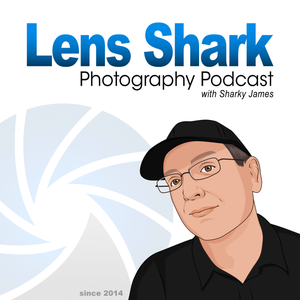 Lens Shark Photography Podcast
Lens Shark Photography Podcast
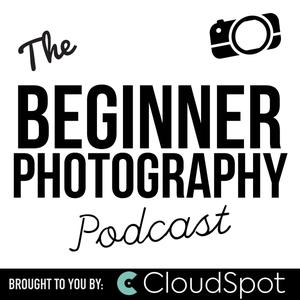 The Beginner Photography Podcast
The Beginner Photography Podcast
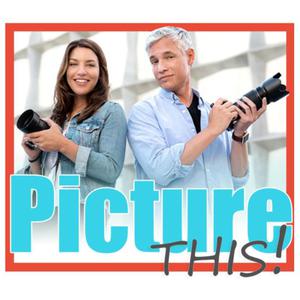 Picture This: Photography Podcast
Picture This: Photography Podcast
 The Candid Frame: Conversations on Photography
The Candid Frame: Conversations on Photography
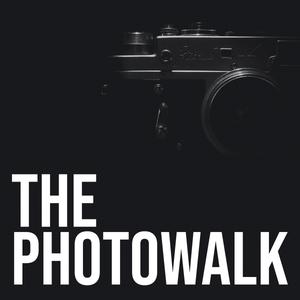 The Photowalk
The Photowalk
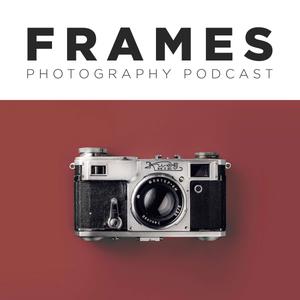 FRAMES Photography Podcast
FRAMES Photography Podcast